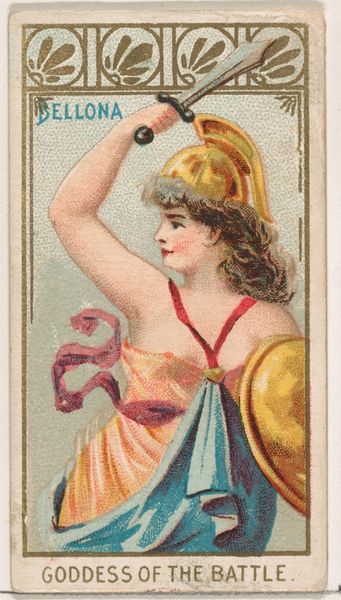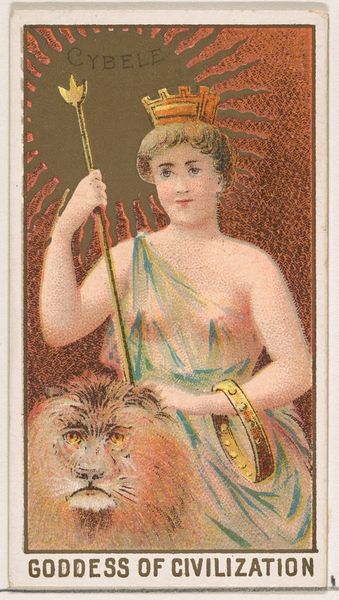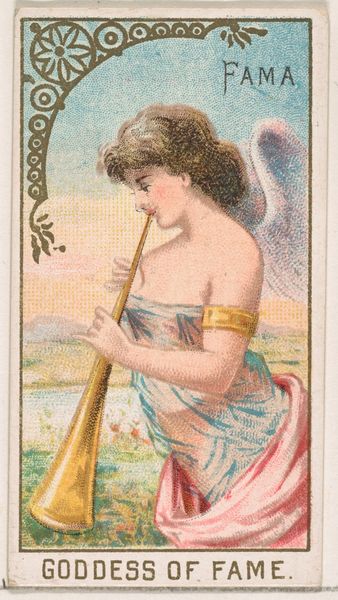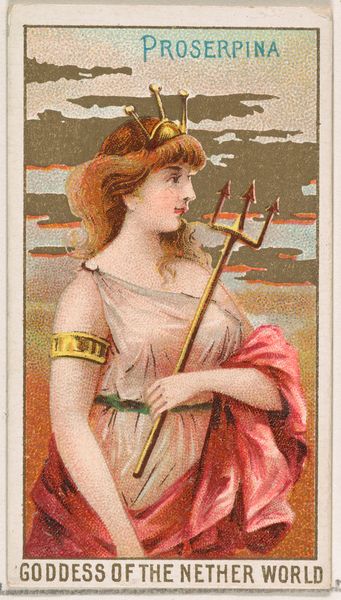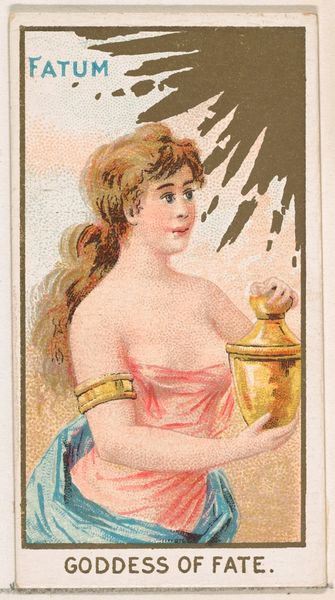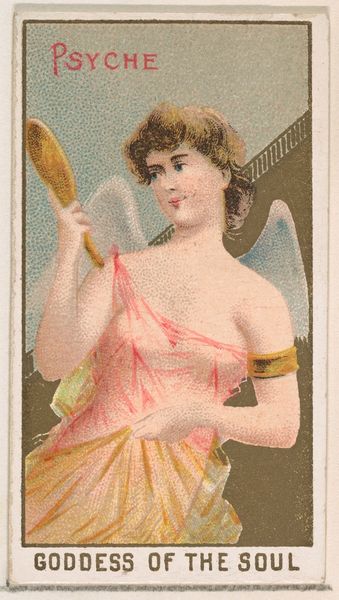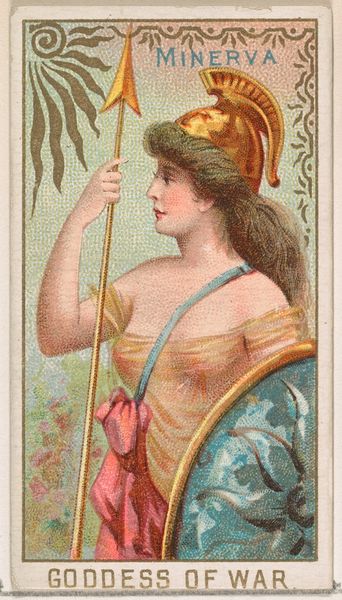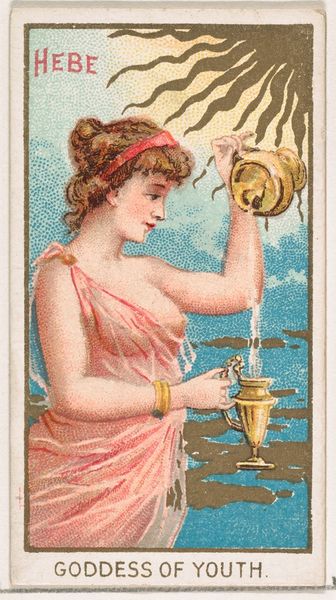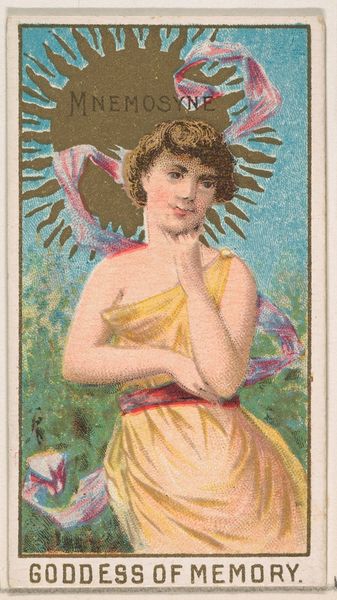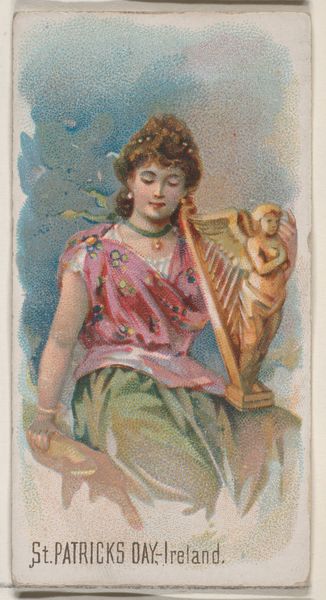
Vesta, Goddess of the Hearth, from the Goddesses of the Greeks and Romans series (N188) issued by Wm. S. Kimball & Co. 1889
0:00
0:00
Dimensions: Sheet: 2 3/4 × 1 1/2 in. (7 × 3.8 cm)
Copyright: Public Domain
Curator: Let's examine this intriguing image of Vesta, Goddess of the Hearth, a chromolithograph dating back to 1889. It was created by Wm. S. Kimball & Co. as part of a series. Editor: My first impression? The coloring is strikingly pastel; almost like it's intentionally evoking nostalgia. I find the crescent moon in the backdrop oddly comforting against the steely gaze of the figure. Curator: The composition employs a rather classical portraiture format, the figure presented in profile, emphasizing idealized features. Notice the symbolic use of attributes: the spear denotes guardianship and the lamp illuminating the flame, representing her sacred duty. Editor: It’s interesting that Kimball & Co. used a Greco-Roman subject in their work. What purpose would an image of a mythological goddess serve for people at the turn of the century? I mean, she is printed on a small card, what function does she play in public life at the time? Curator: I understand what you're saying, and the answer probably has to do with the intersection between classical learning and emergent consumerism. These trade cards allowed everyday individuals to participate in consuming a reproduction of an otherwise largely inaccessible symbol, thus shaping perceptions and circulating particular understandings of this goddess figure, which brings me to your point, they may have been more interested in advertising themselves rather than promoting specific cultural values. Editor: Exactly. This is how academic art becomes commodified; history turned into a spectacle, to advance and perpetuate brands or movements. We have similar echoes of this today. Curator: An astute observation, indeed. It presents a confluence of academic tradition and emergent capitalist consumer culture. The colors, composition, even the subject matter are not mere aesthetic choices; they are deliberately structured to shape public engagement, to encourage purchase by imbuing a product with perceived higher status and values. Editor: I leave now with a slight skepticism about idealized notions and with new respect for the pervasive ways social histories embed themselves in objects and spaces around us. Curator: Precisely. These subtle arrangements of symbol and history demonstrate that meaning, whether intrinsic or culturally influenced, offers us valuable perspectives, so much so that it transcends temporality itself, offering an intimate look into both technique and human experience.
Comments
No comments
Be the first to comment and join the conversation on the ultimate creative platform.


